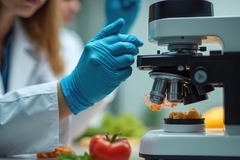
- Industry news
Industry news
- Category news
Category news
- Reports
- Key trends
- Multimedia
- Journal
- Events
- Suppliers
- Home
- Industry news
Industry news
- Category news
Category news
- Reports
- Key trends
- Multimedia
- Events
- Suppliers
CapSnap Equipment Unveils New Environmentally Conscious Water Bottling Equipment Designs

CapSnap’s new design eliminates virtually all of this waste. The “green” washer utilizes a recycled, filtered pre-wash that keeps the consumption of water to the minimum a bottler will introduce at the final rinse stage of the sequence.
31/07/08 Thinking “green” has become ubiquitous in the business world. Companies from all industries are touting themselves as leaders in environmentally friendly technology. Now CapSnap, the commercial water bottling division of Midbrook, Inc. has redesigned its world-renown 5-gallon bottle washers to join the industrial green movement.
Bottled water has been under attack from environmental activists for perceived damage the industry can cause to the Earth. CapSnap has designed their new washer to reduce waste occurring in the wash process and make bottled water more eco-friendly. The machines contribute less waste to the environment, and allow the reuse of 5-gallon bottles; which cuts down on waste from discarded bottles as well.

During the traditional water bottling wash and fill process, a substantial amount of water is lost down the drain. This accounts for a large portion of the waste in the process. CapSnap washers are now available in a low- consumption design that lessens the amount of water that goes down the drain during the washing process.
“Typically, when a washer was equipped with a pre-wash station, the water was recycled from the post-wash rinse stage and sent to drain after its use in the pre-wash stage.”, explains Don Reeder, CapSnap Equipment GM. CapSnap’s new design eliminates virtually all of this waste. The “green” washer utilizes a recycled, filtered pre-wash that keeps the consumption of water to the minimum a bottler will introduce at the final rinse stage of the sequence.
“In the new design, the final rinse solution is fed fresh into the last station of the washer. This is a solution of ozonated water or product water, depending on the bottler. The solution sheds to the final rinse tank, it’s re-used at the second to last rinse nozzle, and overflow is sent upstream to the recirculated rinse tank”, said Reeder.
Once the water is in the re-circulated tank, it can be employed in the initial rinsing process of the bottles. Overflow from that process travels to the pre-wash tank, which is the first stage of the washing process and where the dirtiest bottles are located. In a traditional design, the water from this process is sent to the drain after use, but with the new CapSnap design the water is fed through a 50 micron filter and re-used. The design limits drain water to only the amount of fresh solution fed to the final rinse stage by reusing water at every stage of the process.
This new green design is just the beginning for CapSnap and Midbrook, according to Reeder.
“CapSnap is always looking to adopt environmentally friendlier products that serve the needs of their customers,” he said.
“If someone in the marketplace knows of, or has designed in-house features into their bottling processes, we would like to hear from them. We can offer process features like gas heaters that are much more efficient that electrical heat and motor shut-down based on a part-present signal to turn off energy using devices if there are no bottles in the queue for a specific amount of time. We are also designing fillers with flow-metering that can save water that is lost to over filling.”
Looking for new ways to bring environmentally friendly initiatives to the customer is a constant goal for CapSnap Equipment.
“Saving energy and natural resources is a corporate governance core value at Midbrook and we are striving to be an industry leader as such,” said Reeder.
This particular innovation came from discussions with a leading Middle Eastern bottler. The bottler was looking for ways to cut down on water consumption and make the plant more ecologically conscious. CapSnap worked to develop this design in order to drastically reduce the consumption of water inside the plant.
The test data shows up to an 88% reduction in water consumed during the wash process can be achieved when this practice is applied. By using water in the recycled format, the only drain water consumed was the overflow created by the fresh water introduced. This bottler calculated that over 71,500 gallons of water were saved in a usual 8-hour production run day, compared to their previous design. This equates to nearly 18,000,000 gallons of water going down the drain in a typical year of production.
Saving water during the bottling process is a top priority for many water bottling companies.
“It sounds ironic that a water plant would be concerned about water, but water is a precious commodity and a cost to the business. Some bottlers are motivated by being environmentally friendly and others are looking at water as a cost and the conservation of water as a sound business decision,” said Reeder.
As companies continue to look for ways to reduce cost and consumption, the CapSnap line of water bottling equipment will continue to research and implement new ways of achieving these goals. CapSnap offers this latest innovation in all of their equipment lines, ranging from machines that service small local bottlers to some of the largest water bottling systems in the world.











